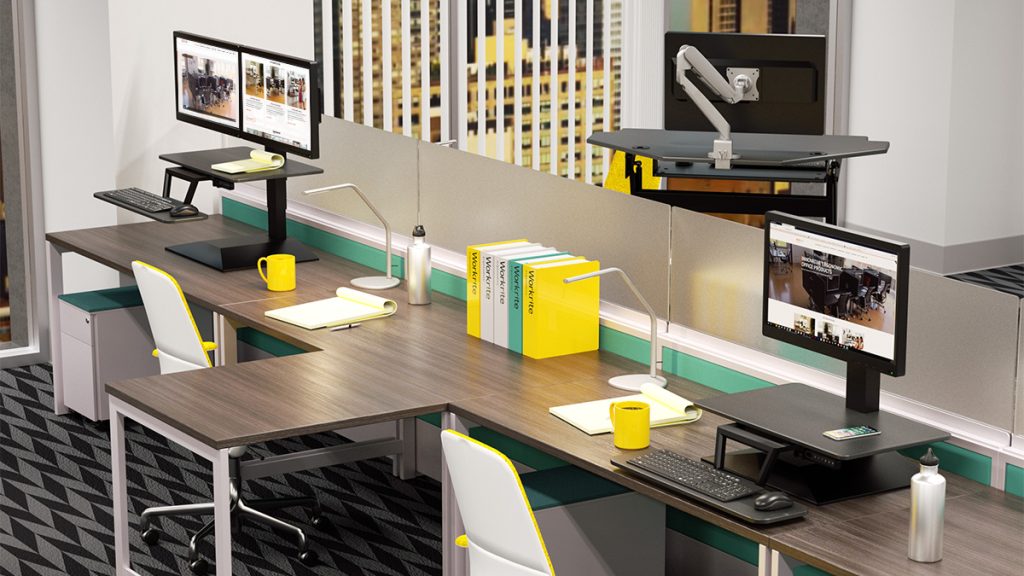The Harmony Equation: How Human Factors Elevate Ergonomic Workspace Design

In today’s world, where the boundaries between work and personal life are becoming increasingly blurred, creating an ergonomic workspace is paramount for both physical well-being and productivity. The concept of ergonomics has evolved over time, shifting from a focus solely on physical comfort to a holistic approach that incorporates essential keywords such as human factors, ergonomic workspace design, and ergonomics. In this engaging article, we will explore the harmony equation that seamlessly combines these keywords to create environments that promote health, well-being, and efficiency.
The Evolution of Ergonomics:
Ergonomics, as a discipline, has come a long way since its inception. Initially, it primarily concerned itself with designing furniture and tools that would reduce physical strain and discomfort for workers.[1] While this remains a fundamental aspect, contemporary ergonomics has expanded its scope to encompass a broader understanding of how humans interact with their environments, including the incorporation of keywords such as workspace design.
The Human Factors Perspective:
Human factors, often referred to as ergonomics’ sibling discipline, considers the psychological, social, and organizational aspects of work. It focuses on how these factors influence individuals’ performance and well-being within the context of workspace design. When combined with traditional ergonomic principles, it creates a comprehensive approach that considers the whole person within their work context.
The Harmony Equation:
The harmony equation, as we like to call it, is the synergy between ergonomic design, human factors, and other vital keywords that result in a workspace that is greater than the sum of its parts. Let’s delve into the key components of this equation:
- Physical Ergonomics: The Foundation of Workspace Design
Traditional ergonomic principles play a vital role in the harmony equation. This involves designing workstations, chairs, and tools that support proper posture, reduce the risk of musculoskeletal disorders, and promote physical comfort which is essential for ergonomic workspace design.
- Cognitive Ergonomics:
Cognitive ergonomics focuses on how mental processes and cognitive abilities impact work performance. It considers factors such as information processing, decision-making, and mental workload—essential elements of workspace design.
- Emotional Well-Being: A Critical Aspect of Workspace Design
An often overlooked aspect of workspace design is its impact on emotional well-being, which is intrinsically linked to ergonomic workspace design. Human factors emphasize creating environments that reduce stress and promote positive emotions.[2]
- Social Dynamics:
Workspaces are not isolated environments but rather hubs of social interaction. Collaborative spaces, open layouts, and opportunities for team interaction are examples of designs that foster positive social dynamics—integral keywords in the harmony equation.
- Organizational Considerations: A Holistic Approach
Human factors extend beyond the individual and encompass the organization as a whole. Workplace policies, management practices, and communication strategies are all vital aspects.[3] A culture that values work-life balance, promotes diversity and inclusion, and encourages employee autonomy contributes to a harmonious workspace—crucial keywords in the equation.
Benefits of the Harmony Equation:
When ergonomic workspace design and human factors come together, the benefits are numerous, and they align perfectly with keywords that resonate with search engines and readers alike:
- Enhanced Productivity: A workspace that aligns with human factors reduces distractions and mental fatigue, allowing individuals to focus and perform at their best, boosting productivity.
- Improved Health: Physical ergonomics reduce the risk of musculoskeletal issues, while emotional well-being and social dynamics contribute to overall mental health and job satisfaction, addressing health and well-being.[4]
- Greater Innovation: Collaboration and creativity thrive in workspaces that encourage social interaction and support cognitive ergonomics, promoting innovation.
- Higher Retention Rates: A well-balanced workspace that considers organizational factors fosters employee loyalty and reduces turnover—vital for retention.
The harmony equation, which seamlessly combines the principles of ergonomic workspace design, and human factors, is the key to creating work environments that promote health, well-being, and efficiency. By recognizing the multifaceted nature of work and its impact on individuals, organizations can unlock the true potential of their workforce and ensure a brighter, more harmonious future.[5] In an era where remote and hybrid work models are becoming increasingly prevalent, understanding and implementing the harmony equation, with its integrated keywords, has never been more critical.
We understand that employees face a wide range of demanding occupational hurdles, including stress, anxiety, imposter syndrome, and even physical pain from long hours of work. OOHMS’ cutting-edge technology solutions are designed to help organizations minimize expenses while achieving lasting results in employee well-being and productivity.[6]
